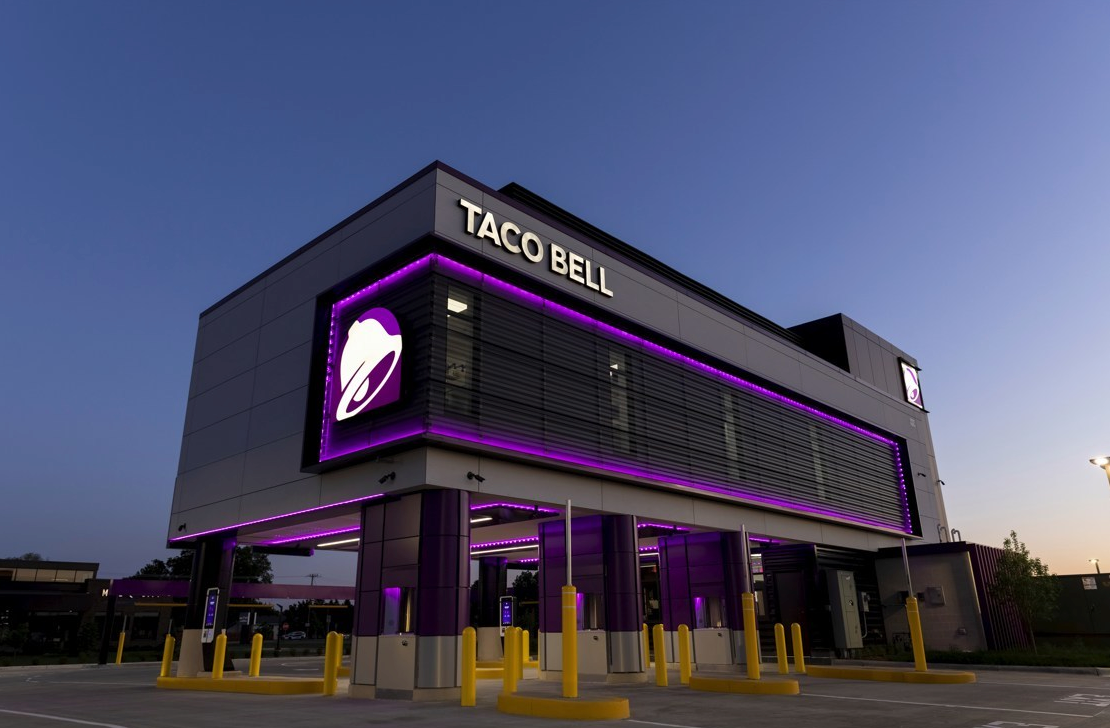JustAGuy1
Diamond Member
- Aug 18, 2019
- 17,883
- 15,573
- 2,290
Why fast food is racing to ditch the dining room.
Dunkin’ is far from alone. Name a fast-food restaurant and the odds are the company has recently developed a branch without any restaurant at all. Chipotle’s first “Digital Kitchen,” which opened in upstate New York in 2020, has no dining room. A branch that opened last year in the Cleveland suburbs doesn’t even let customers inside the store. This summer, Taco Bell opened something it calls Taco Bell Defy, which is not a restaurant at all but a purple taco tollbooth powered by QR code readers and dumbwaiters that bring the food down from a second-story kitchen. The operation is, by most accounts, astoundingly efficient. Wingstop’s “restaurant of the future” doesn’t have seats or take cash.What’s driving this trend? Partly savings on real estate and labor. But mostly it’s a response to consumer preference. Pushed by pandemic restrictions and pulled by the increasing ease of mobile transactions, customers have rushed into drive-thrus, delivery, and mobile ordering. Even with coronavirus fears in most Americans’ rear-view mirror, Chipotle’s in-restaurant sales now account for just a third of its business. At Panera, which opened its first to-go-only locations this summer, that figure is under 20 percent.
Five hours into a long drive through New England last week, I needed coffee. I pulled up to a Dunkin’ in Gorham, New Hampshire, parked, and got out of the car. Mistake. In the donut-scented interior, I learned that this Dunkin’ wasn’t taking orders in the store—only at the drive-thru and via the app. Reluctantly, I downloaded Dunkin’, selected a large cold brew, tapped in my credit card number, and watched in silence as two workers prepared and placed the coffee on the largely obsolete counter.
Seven days later, I got an email—“Are Your Cravings Calling?”—that left me unsure if I’d signed up for DD or AA. I was part of the Dunkin’ digital universe now, which is right where the company, owned by Atlanta-based Inspire Brands, wants me. Certainly more than in the actual store. Last August, Dunkin’ opened its first “digital” location on Beacon Street in Boston. There are no cashiers, replaced by touchscreens and mobile ordering, and no seats or tables.
Dunkin’ is far from alone. Name a fast-food restaurant and the odds are the company has recently developed a branch without any restaurant at all. Chipotle’s first “Digital Kitchen,” which opened in upstate New York in 2020, has no dining room. A branch that opened last year in the Cleveland suburbs doesn’t even let customers inside the store. This summer, Taco Bell opened something it calls Taco Bell Defy, which is not a restaurant at all but a purple taco tollbooth powered by QR code readers and dumbwaiters that bring the food down from a second-story kitchen. The operation is, by most accounts, astoundingly efficient. Wingstop’s “restaurant of the future” doesn’t have seats or take cash.
What’s driving this trend? Partly savings on real estate and labor. But mostly it’s a response to consumer preference. Pushed by pandemic restrictions and pulled by the increasing ease of mobile transactions, customers have rushed into drive-thrus, delivery, and mobile ordering. Even with coronavirus fears in most Americans’ rear-view mirror, Chipotle’s in-restaurant sales now account for just a third of its business. At Panera, which opened its first to-go-only locations this summer, that figure is under 20 percent.

The Chipotle Digital Kitchen in Cuyahoga Falls, Ohio, opened in December. Chipotle Mexican Grill, Inc.
“It’s a way to cater to changing customer-order behaviors,” explains Emma Beckett, an editor at Restaurant Dive, an industry publication. While smaller store footprints and radical new designs are mostly reserved for new locations, she says, the arms race is on to remodel older stores with drive-thru lanes. “Everyone wants double or triple drive-thrus, so those parcels are becoming competitive, because there are only so many corner lots that can accommodate that.”
[Read: Something Historic Just Happened at Chipotle]
Everything is moving in the direction of Checkers and Rally’s, two drive-thru chains that were early to this idea. Take Salad And Go, the nine-year-old budget salad chain that now has dozens of locations in Arizona and Texas. Salad And Go has no inside at all, nor does it usually bother with picnic benches or even parking spots, like Sonic. Founder Roushan Christofellis has said the stores’ “microfootprints” are the secret to their super-affordable salads. As a bonus, no public interior space means you don’t need to build customer parking.
Wherever Americans are eating, it isn’t inside fast-food joints. To meet this shift, some chains, like Wendy’s and Qdoba, have embraced “ghost kitchens,” unmapped, closed-door facilities where food for delivery might be prepared for a dozen different brands at once

Why Fast Food Is Racing to Ditch the Dining Room
America traded eating out for ordering ahead during the pandemic—and chains noticed.
The times they are a changing